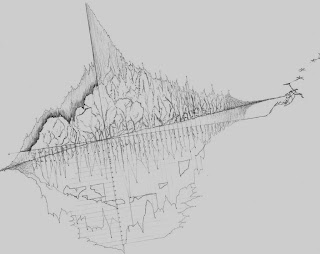In this stage, the project investigates the space that exists after the drawing.
“It is important to remember that in the classical tradition, drawing began when a Corintian maiden outlined the shadow (a profile) of her departing lover on a wall.” (Pérez-Gómez, A. & Pelletier, L. 1997, p.112)
Many discussions of drawings begin with the classical legend of the origin of drawing.
The trace of a shadow’s outline is sometimes cited as the first drawing or painting. In other words, drawing is the trace of shadow. Meanwhile, a drawing is like a window through which we can see things and environment (Booker, P.J., 1963) From ‘Projective Cast’, Robin Evans (1995) which states briefly that: “architects do not make buildings, and they make drawing for buildings.” They not only design the object but also draw the environment.
Without drawings, there would be no environment (Evans. R.,1997). Drawings depends upon how observer sees, interprets and analyzes the environment. At the final stage of this journey, the Stone Circle is the point of departure. It is the space wher the heavenly sphere is transformed by the shadow’s projection. The trace of shadow is presented the space through the drawing.






